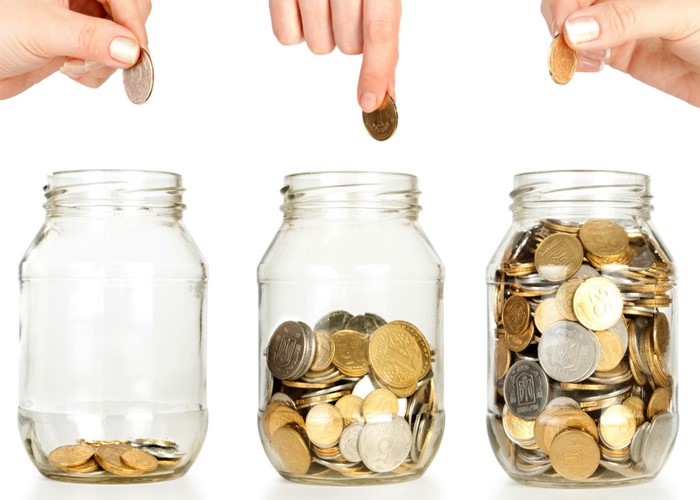One in three Brits on a financial knife edge

Shocking new survey highlights depth of the savings crisis.
Around six million people do not have a penny in savings, according to new data from NS&I, with more than a third confessing they do not have enough money set aside to cope in an emergency.
The shocking results demonstrate just how big a risk many of us are taking with our finances, gambling that nothing untoward will ever happen.
What’s more, Brits are pessimistic about even improving their savings behaviour in the future, with a quarter of respondents to the Savings Survey admitting they are even less likely to save over the next three months.
Tough times
According to the survey, the average Brit is saving about £100 a month. Men are better savers in that they manage to save 8.43% of their salary, as opposed to 8.19% with women, though these figures are still pretty insignificant.
Related how-to guide

Build up your savings
Here's how to get into the savings habit, find forgotten money, work out the real value of a savings rate and build up that emergency savings pot.
See the guideHowever, times of uncertainty are the exact times when we should be doing all that we can to ensure a decent safety net is in place. So how do you go about building up some savings?
Setting a goal
Setting a goal for your saving is a big psychological boost when it comes to actually putting money aside each month. I know that when I was saving for the deposit on my house, it was a lot easier putting aside half of my salary each month knowing where that money was going to be spent.
According to the NS&I study, a little over a quarter of us (26%) set a savings goal. Around a third of those (32%) say that they prioritise saving in case of an emergency, a big jump from the last quarter when they were last surveyed, when just 23% reported this as their savings priority. The summer holidays are also a significant motivator, with 37% of people saving in order to get their finances in shape before hitting the beach.
Other reasons that NS&I identified include saving for a deposit to buy a property (35%), saving for retirement (21%), saving for a car (21%) and saving for their children’s future (19%).
Finding the cash
Of course, it’s all well and good knowing what you want to save towards, quite another to actually have the money to put into a savings account.
As tough as that may seem, the truth is that most of us can spare a few pounds each month, just by being a little clearer on where we are spending our money. And that means budgeting properly, keeping track of exactly where our money is being spent, and on what.
Related blog post
- The Consumer Credit Counselling Service writes:
What we shouldn't learn from the people of Richmond
Perhaps all is not rosy in the leafy suburbs…
Read this post
The lovemoney.com tracker tool tracks where you spend your money each month, and breaks it down into a variety of subsections. That way it’s easy to identify the areas where savings can be made – perhaps you’re spending a little more than you’d like on travel, and could instead cycle to work? Or perhaps the rising cost of food means that your grocery shop is now substantially more expensive, and savings could be made by using a different supermarket.
The tool is absolutely free, so give it a try!
Shopping around
Another simple way to find a few extra quid is to shop around for better deals on the various bills you shell out for each month, from your gas and electricity to your broadband.
Indeed, according to a recent study by MyVoucherCodes.co.uk, the majority of homeowners and renters do not review their utility providers, with just a third having done so since moving into their current property.
For a comprehensive guide to shopping around, and how it can save you £1,200 a year, check out The biggest way you’re losing money.
Where to save
Once you have identified how much you can afford to save each month, it’s time to find a home for those savings. If you’re trying to get into the savings habit, a regular saver account can be a smart move. These accounts offer far higher rates of interest than other savings accounts – in some cases up to as much as 8% - in return for you saving an allotted amount each month.
So for example, with First Direct, so long as you save £25 each month, you will enjoy 8% on those savings. However, should you fail to pay in that amount, the account may be switched to a bog-standard savings account, paying a far less attractive rate.
Alternatively, you may want to go for an easy access account. These do not set out monthly savings requirements in the way a regular saver does, and they also offer you access to your cash, which again is not a feature of most regular savers. However, you will enjoy a far less juicy rate in return.
The best account around at the moment is the Poppy Online Saver from Coventry BS, which pays 3.10% on your cash, while you can get 3.05% on your savings with the Nationwide MySave Online Plus. For a great guide to some of the best savings accounts in the market today, be sure to read Savings rates at highest levels in two years.
Follow the example of the young
However, there is a slight cause for some optimism – the attitude of younger people to saving. 40% of those aged between 16 and 24 set savings goals, compared to just a quarter of 35-44 year-olds. They are also more committed to saving in the future, with 44% of them saying they are more likely to save in the coming months, compared to a paltry 14% of 35-44 year-olds.
So clearly, we all should all take a leaf out of the youngsters’ book!
More: Savings rates at highest levels in two years | Five reasons to pay by card not cash
Most Recent
Comments
-
There is a common theme running through the 'financial advice/talking shops' at the moment, and depending on which side of the fence you sit, it is either a catastrophic situation or an opportunity for change. I have long believed we (the populus) are subject to consumerist market forces that have shaped our way of life and taken away our ability to think independently, including the important decisions on our finances. Some facts affecting our finances are unshakeable: Recent stock market crashes and the sunsequent banking crisis; Public finance overspend and shortfall; Boom and bust cycles; The evolution of trade/economic acivity in this country and the subsequent shift in the labour force profile. For me, it is a case of altering my outlook to match the prevailing economic paradigm. Thus, I spend less, I try and save more, I cannot alter rates of return unless I am prepared to take risks. There is a sense that the retirees of 20 years forward will be less well off: Well it is down to the individual, not the state to change that. I have lived through 0.5 ~ 7% interest rates, I am not sure which I prefer?? Everyone has a responsibility to get a grip of their finances, and evolve their financial model to suit the current conditions.
REPORT This comment has been reported. -
Judging from the comments we would all like higher interest rate and a fair deal for savers; but it is unlikely to happen as the government will use inflation and fiat money to default on it's debts and get away with it.
REPORT This comment has been reported. -
The present 'centre right' government and the previous 'centre left' one agree that the appropriate interest rate for savers should be pegged to the lowest bank base rate for 300 years-- wrestled down and held there for almost three years, so that spendthrifts with credit cards, over-ambitious house purchasers and suchlike should be spared the consequences of their extravagance. It suits a government up to the eyebrows in debt too. While pretending to be against inflation, the government and the Bank of England connive in keeping it high to reduce the real burden of that debt, while ensuring that savers cannot get a real after-tax reward for their pains. For 15 years a stream of scandals, swindles and frauds have been perpetrated on those of us trying to provide for our children, old age and health by supposedly regulated providers of savings and investments. When the worst of these, the banksters, were in danger of going bust, savers (qua taxpayers) were hastily conscripted to stop the market passing judgement on their follies. But the victims of Equitable Life, for instance, were left to die penniless years after they were robbed. And now we have an exploding population of welfare leeches, and a public sector of overpaid, lazy, index-linked-pensioned employees, who all look forward to being taken care of by the taxes of the independent, enterprising and self-reliant. People who have achieved some success and taken risks are 'higher rate taxpayers' to be mulcted so life's passengers and failures, including alien arrivals, have it easier. These parasites will sway politicians by their votes as they become a larger and larger part of the electorate, ganging up on the productive minority to bleed them white. The question ought to be why any Briton in his right mind bothers to save at all. Only our pride, silly old-fashioned fools that we are, stops us throwing ourselves on to the charity of the State.
REPORT This comment has been reported.
Do you want to comment on this article? You need to be signed in for this feature









04 July 2011